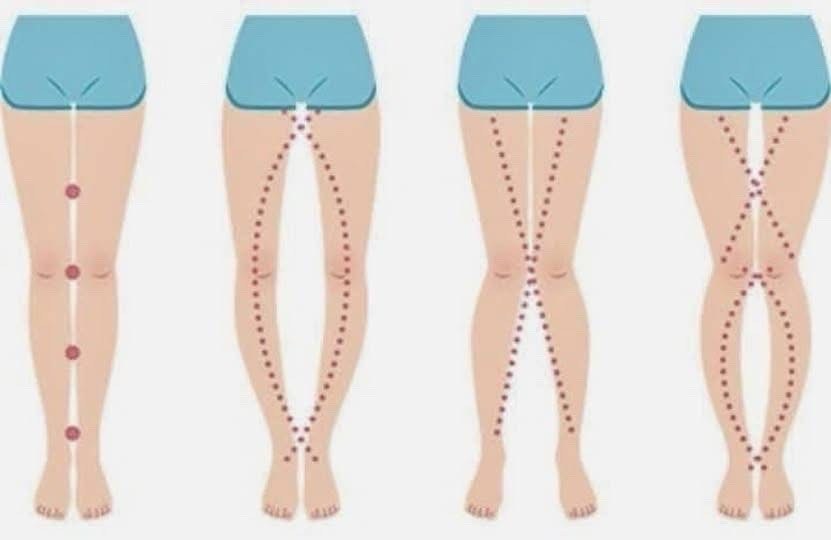WHAT CAN A WOMAN’S FEET REFLECT?

🦵 1. Normal (Straight) Legs — Type 1 (Far Left)
Description:
Legs align properly from the hips, knees, and ankles.
There are no visible gaps between the thighs, knees, or ankles.
What it means:
✅ Indicates healthy alignment of bones and joints.
✅ Weight is evenly distributed, reducing strain on knees and hips.
✅ Usually doesn’t cause discomfort during walking or standing.
🦵 2. Bowlegs (Genu Varum) — Type 2 (Second from Left)
Description:
Knees stay apart even when the ankles are together.
The legs curve outward like a bow.
What it means:
⚠️ May occur due to childhood bone development, rickets, or arthritic conditions in adults.
⚠️ Can cause knee strain, imbalance, and eventual joint wear and tear.
⚠️ Often treated with physiotherapy or orthotic correction depending on severity.
🦵 3. Knock Knees (Genu Valgum) — Type 3 (Second from Right)
Description:
Knees touch or are very close together while the ankles stay apart.
Legs appear to curve inward.
What it means:
⚠️ Often seen in children and usually corrects with age.
⚠️ In adults, it may indicate joint weakness, flat feet, or hip problems.
⚠️ Long-term misalignment can lead to pain, instability, and arthritis.
🦵 4. Crossed Legs (Extreme Knock Knees or Pelvic Tilt) — Type 4 (Far Right)
Description:
Legs and knees cross significantly over each other.
Indicates severe inward rotation or postural imbalance.
What it means:
⚠️ Could be linked to pelvic misalignment, posture-related issues, or severe knock knees.
⚠️ Can affect hip stability, gait, and pelvic floor health.
⚠️ May require posture correction, physical therapy, or medical evaluation.
🚨 Important Notes:
- These leg shapes do not reflect anything about someone’s character, worth, or private anatomy.
- If you experience pain, stiffness, or difficulty walking due to any of these alignments, consider visiting a physiotherapist or orthopedic specialist.
- Exercises, stretches, and corrective footwear can often improve alignment or reduce discomfort.


